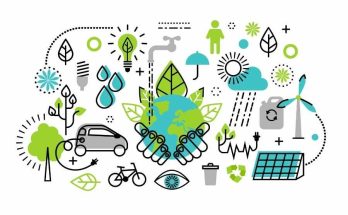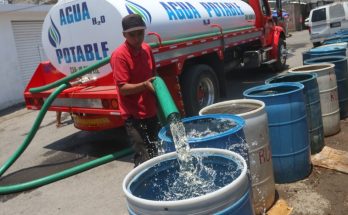By Alejandro Angulo
Is climate change just an increase in temperature and an increase in temperature and atmospheric particulate matter? Or does it also affect food supplies? Today’s food security crisis is beginning to be seen as a synergistic effect of climate change. This is due, among other factors, to droughts and temperature increases that affect the harvest season. It can be inferred that this causes a decrease in food at the global level, which also has repercussions in food price increases.
The key to understanding the relationship between climate change and food security is linked to water—either because of scarcity or flooding. However, temperature also has a direct impact by causing delays in flowering or fruit production, as is the case in coffee plantations. In the Sierra de Querétaro, where coffee is produced, climate change has reduced production for small local producers by about 30%, and the relationship between climate change and food security moves in both directions. The planet’s food system is responsible for about 26% of greenhouse gas emissions, and it requires the greatest consumption of water (between 70 and 80%).
According to recent studies by the University of Leeds (2019), it is estimated that by 2050, there may be 2.5 billion people (and 1600 cities in the world) lacking food security.
In Mexico, a corn producer (according to Ureta C. and others [2020]), the yield, which is now 6 to 8 tons per hectare, will drastically decrease from 0.75 to 1 ton.
Now that more is known about the interrelationship between water and food security, it will begin to be measured together within the National Health and Nutrition Survey (ENSANUT).
In an urban era, the issue of food security is fundamental. Therefore, it is necessary to change or restructure food systems and consider alternative food options, such as urban gardens.
The problems between climate change and food are nothing more than a manifestation of a socio-environmental crisis.
To think that agricultural expansion in rural areas is the solution is a mistake. Everyday food demands increase due to population growth, and the agricultural frontier cannot be expanded for two reasons: first, the reduction of its population and, second, because it is not viable to increase the agricultural area at the expense of ecological zones. This alters natural ecosystems and their biodiversity. Therefore, production in urban contexts is the alternative with better environmental benefits. It would reduce transportation distances (an ecological footprint) and therefore reduce energy, which would preserve food and prices.
In the municipality of Querétaro, there is a valuable example of an urban community garden called Zona Viva. Also, the municipality itself, through the Institute of Ecology and Climate Change, is in its second year of financing groups of citizens who want to install their own urban gardens (which includes training, seeds, and water-saving systems).
But it is necessary to look at all measures that must be promoted, such as local destination markets—the large number of micro, small, and medium-sized food businesses which can be supplied by local food production. On the other hand, it is necessary to support the so-called small markets, to bring products closer to its citizens.
Producing locally in urban orchards, promoting local trade mechanisms, and supplying local businesses are viable, sustainable alternative measures with a social impact.
In addition, the municipality in Parque La Barreta has initiated the creation of three islands of «living pharmacies,» which consist of the interaction between human beings and medicinal plants, through a balanced reproduction process. It is established in a place which is used rationally and permanently by human beings to prevent or cure diseases.
The living pharmacy is a didactic resource, because the medicinal plants that are established in cultivation allow an intra-family and inter-family group or community teaching-learning process. It constitutes a valuable alternative for the in situ cultivation of medicinal plants to avoid the change of vocation of the land and its degradation. In addition, it is defined as a set of species established in a certain place, be it in the urban or rural environment, collectively or individually, induced, or wild. This ensures its care and replacement where there are plants with a double or triple purpose. In addition to having medicinal properties, they also function as ornamental or food plants, such as bougainvillea, arnica, mercadela, aloe vera, hawthorn, epazote, mint, and thyme.
Producing locally in urban contexts translates into combating climate change by reducing the carbon footprint. It promotes the adoption of eco-techniques that optimize space, energy, and water. This boosts markets with local products which benefit its citizens and local producers alike. It is also necessary to promote the consumption of local products with a high organic nutritional content. These have a positive impact on health, such as mesquite and its honey, as well as garambullo in waters and jams, and oregano from the semi-desert, all of which have an excellent adaptive capacity to climate change.
It is important to produce, market, and consume local products.




